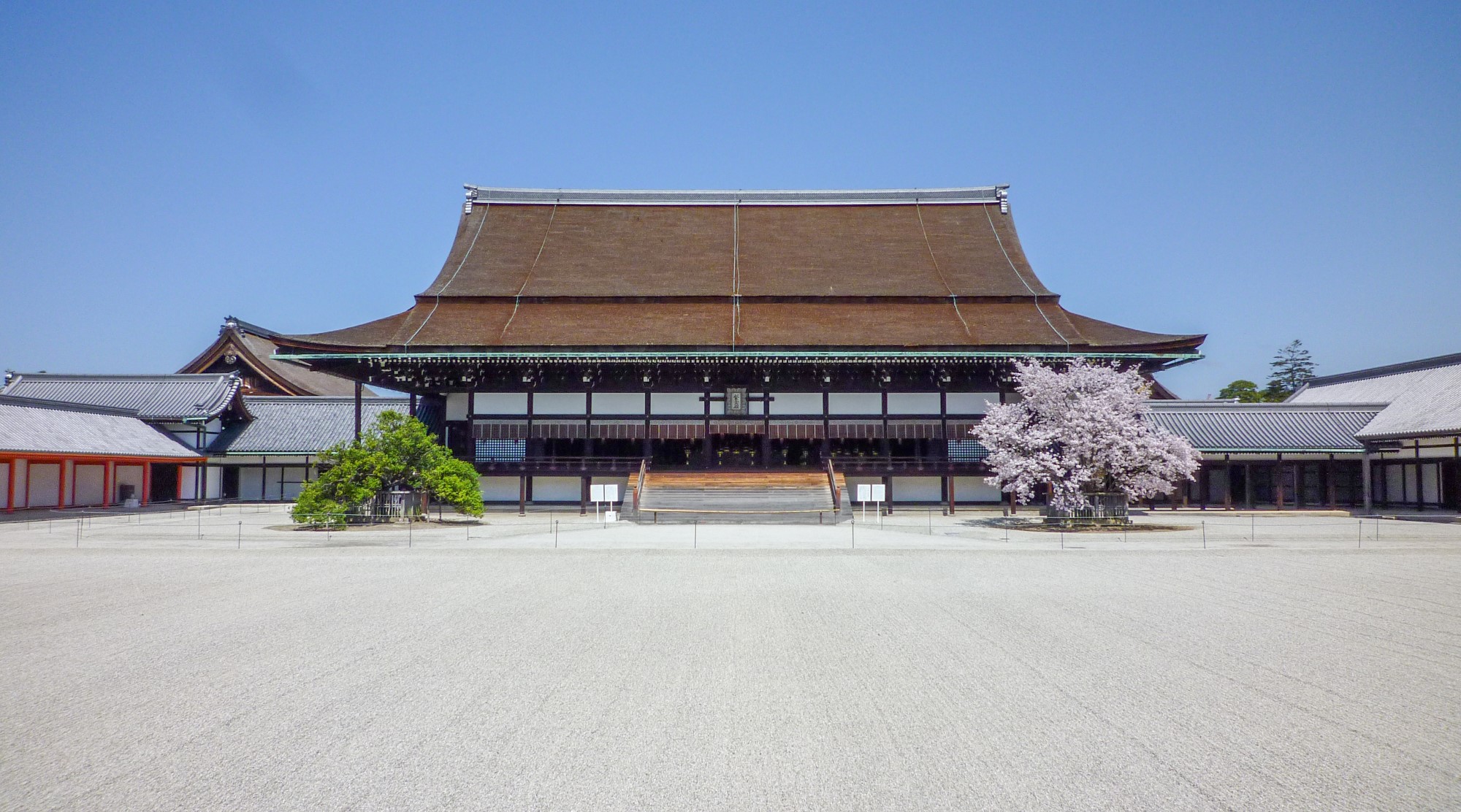Introduction
Kyoto Imperial Palace (京都御所, Kyōto Gosho) served as the residence of Japan’s Imperial Family until 1868, when the capital moved to Tokyo during the Meiji Restoration. This ancient palace, nestled within the spacious Kyoto Imperial Park (京都御苑, Kyōto Gyoen) in the heart of Kyoto, forms a unique historical and cultural landscape alongside other imperial structures like the Sento Imperial Palace. This article will guide you through this palace that encapsulates a millennium of Japanese history, offering glimpses into the daily lives of past emperors.
Kyoto Imperial Palace at a Glance:
- Located in Kyoto Imperial Park in central Kyoto
- Imperial residence until 1868
- Current buildings reconstructed in 1855
- Features multiple gates, halls, and gardens
- Hosted enthronement ceremonies for Emperors Taisho and Showa
- Now open for visits without prior reservations
- Nearby attractions include Sento Palace and Kaninnomiya Mansion
Rich History
The history of Kyoto Imperial Palace dates back to 794 when Heian-kyo (present-day Kyoto) became the capital. As the emperor’s residence, it witnessed Japan’s evolution from the Heian to the Edo period. Throughout its long history, the palace suffered multiple fires and reconstructions, and even relocated within Kyoto several times.
The current palace complex was rebuilt in 1855, preserving the architectural style of the Edo period. Even after the imperial court moved to Tokyo during the Meiji Restoration, Kyoto Imperial Palace maintained its significance. The enthronement ceremonies of Emperors Taisho and Showa were held in the palace’s main hall, a tradition that changed only with the current Emperor Naruhito, whose ceremony was held in Tokyo Imperial Palace.
Main Attractions
1. Shōmeimon Gate
Shōmeimon Gate serves as the main entrance to Kyoto Imperial Palace and the starting point for visitors. This imposing gate symbolizes imperial authority and showcases the exquisite craftsmanship of traditional Japanese wooden architecture.
2. Shishinden (Hall of State Ceremonies)
The Shishinden is the most important building in the palace complex and the venue for major ceremonies. Built in the traditional Shinden-zukuri style, it features lavish interior decorations, including a ceiling adorned with intricate phoenix paintings.
3. Seiryōden (Emperor’s Residence)
The Seiryōden was the emperor’s living quarters. While visitors cannot enter the building, its elegant exterior and surrounding garden design offer a glimpse into the refined lifestyle of Japan’s imperial family.
4. Oikeniwa Garden
Oikeniwa Garden is a beautiful landscape within the palace grounds, incorporating many elements of traditional Japanese garden design. With seasonal flowers, carefully placed rocks, and serene ponds, it provides visitors with a perfect spot for contemplation and appreciation of nature.
Best Time to Visit
While Kyoto Imperial Palace is open all year, spring and autumn are particularly appealing:
- Spring (late March to early April): Cherry blossoms in full bloom, especially the weeping cherry trees in the park
- Autumn (October to November): Spectacular fall foliage as maple trees turn vibrant shades of red and gold
- Avoid peak tourist seasons like Golden Week (late April to early May) and Obon Festival (mid-August)
Getting There
From Kyoto Station:
- Take the Karasuma Subway Line
- Get off at Marutamachi Station (7 minutes, 260 yen) or Imadegawa Station (10 minutes, 260 yen)
- Imadegawa Station is closer to the palace entrance
Opening Hours and Admission
- Hours:
- April to August: 9:00-17:00
- September and March: 9:00-16:30
- October to February: 9:00-16:00
- Closed: Mondays (or following day if Monday is a national holiday), December 28 to January 4
- Last admission: 40 minutes before closing
- Admission: Free
Visitor Tips
- Check the official website for the latest opening information
- Wear comfortable walking shoes as the park is extensive
- Bring a camera, but follow photography guidelines
- Pack sunscreen and insect repellent, especially in summer
- Maintain quiet and respect the historical site during your visit
- Consider joining an English guided tour for in-depth historical insights
Official Website
Conclusion
Kyoto Imperial Palace is more than just a historical building; it’s a microcosm of Japanese imperial culture. Every beam and tile tells a story of Japan’s long history. Whether you’re a history enthusiast or a traveler seeking to delve deeper into Japanese culture, Kyoto Imperial Palace is worth your time to explore and appreciate. Visit to travel back in time, experience glimpses of past emperors’ lives, and admire the essence of traditional Japanese architecture.

Leave a Reply